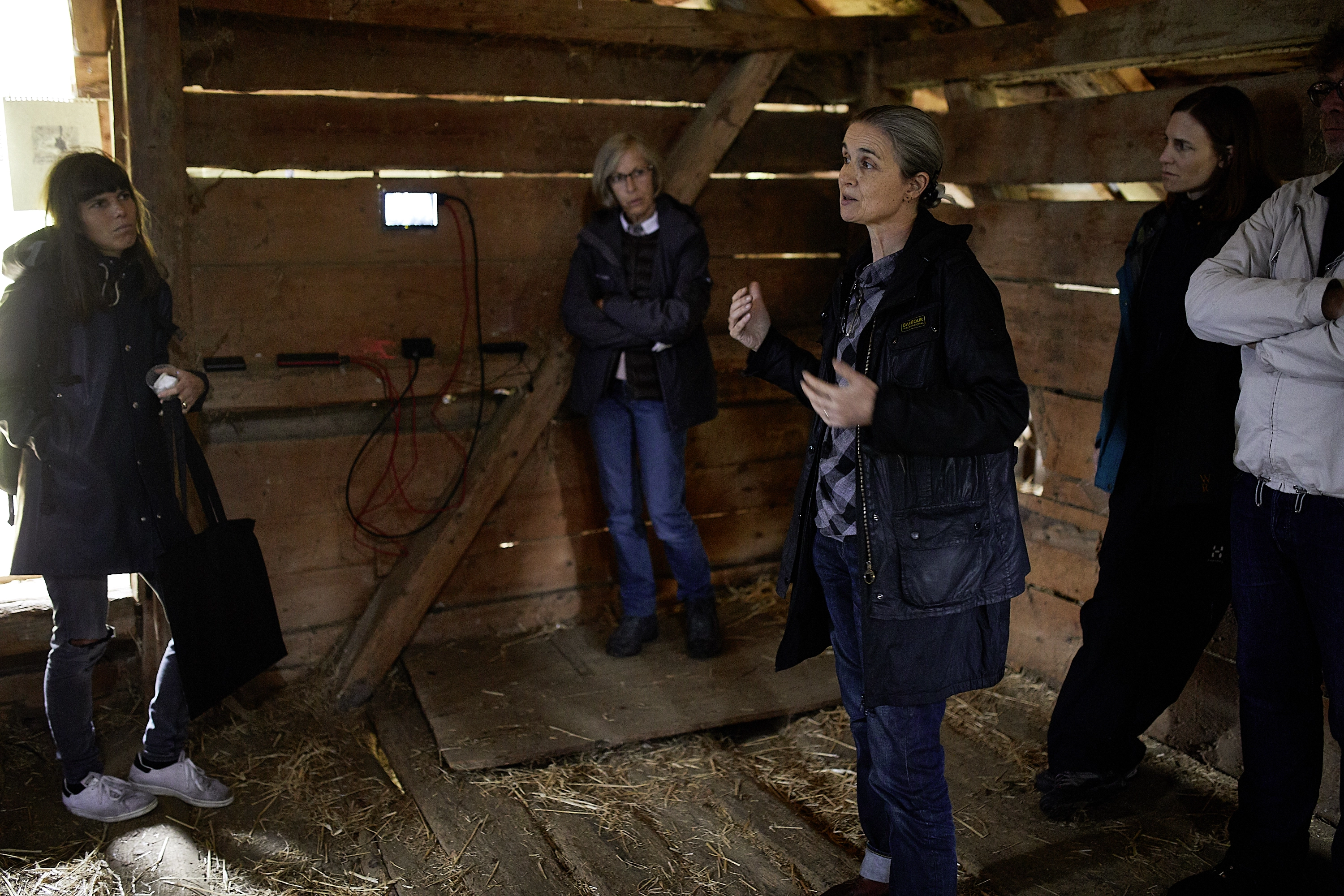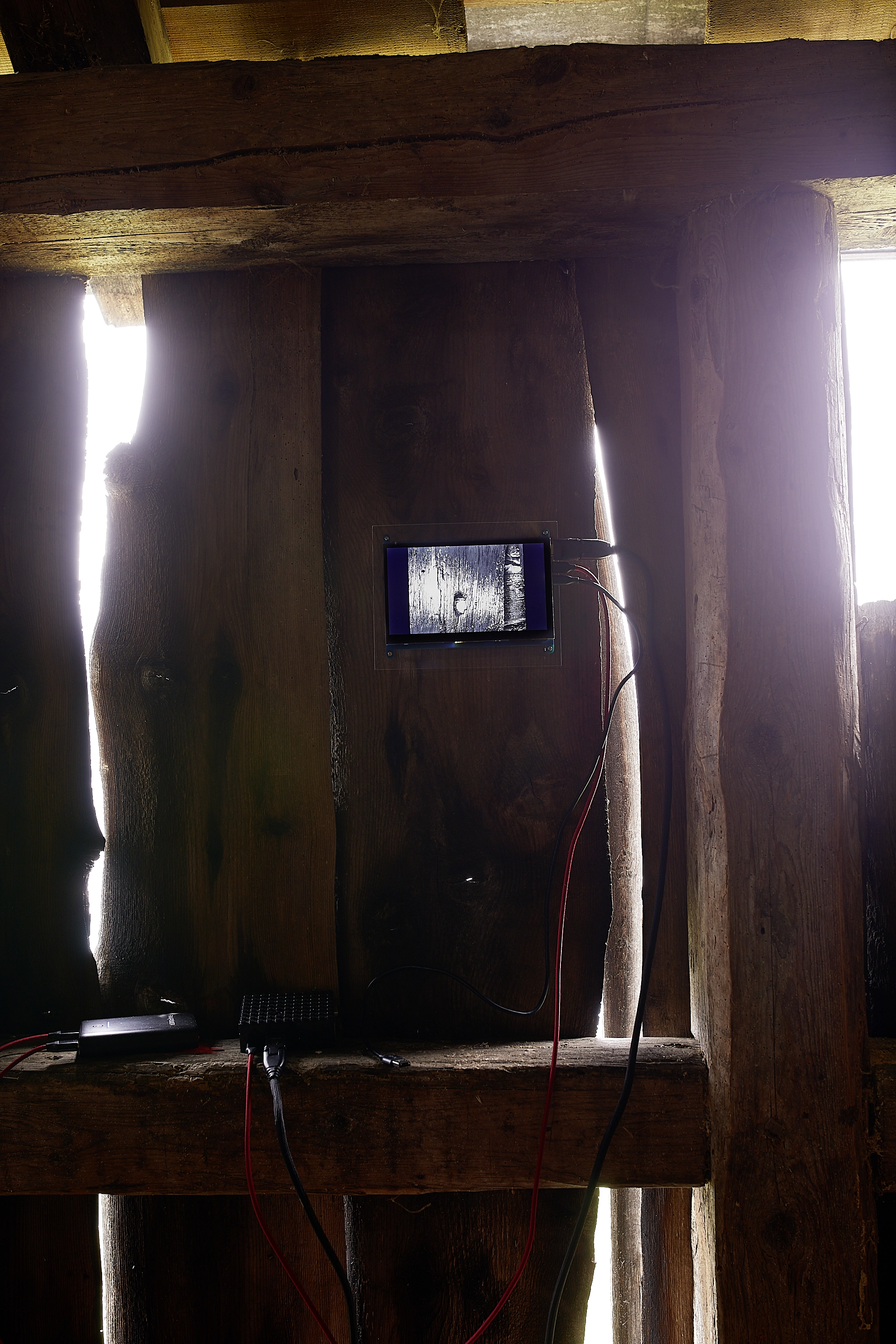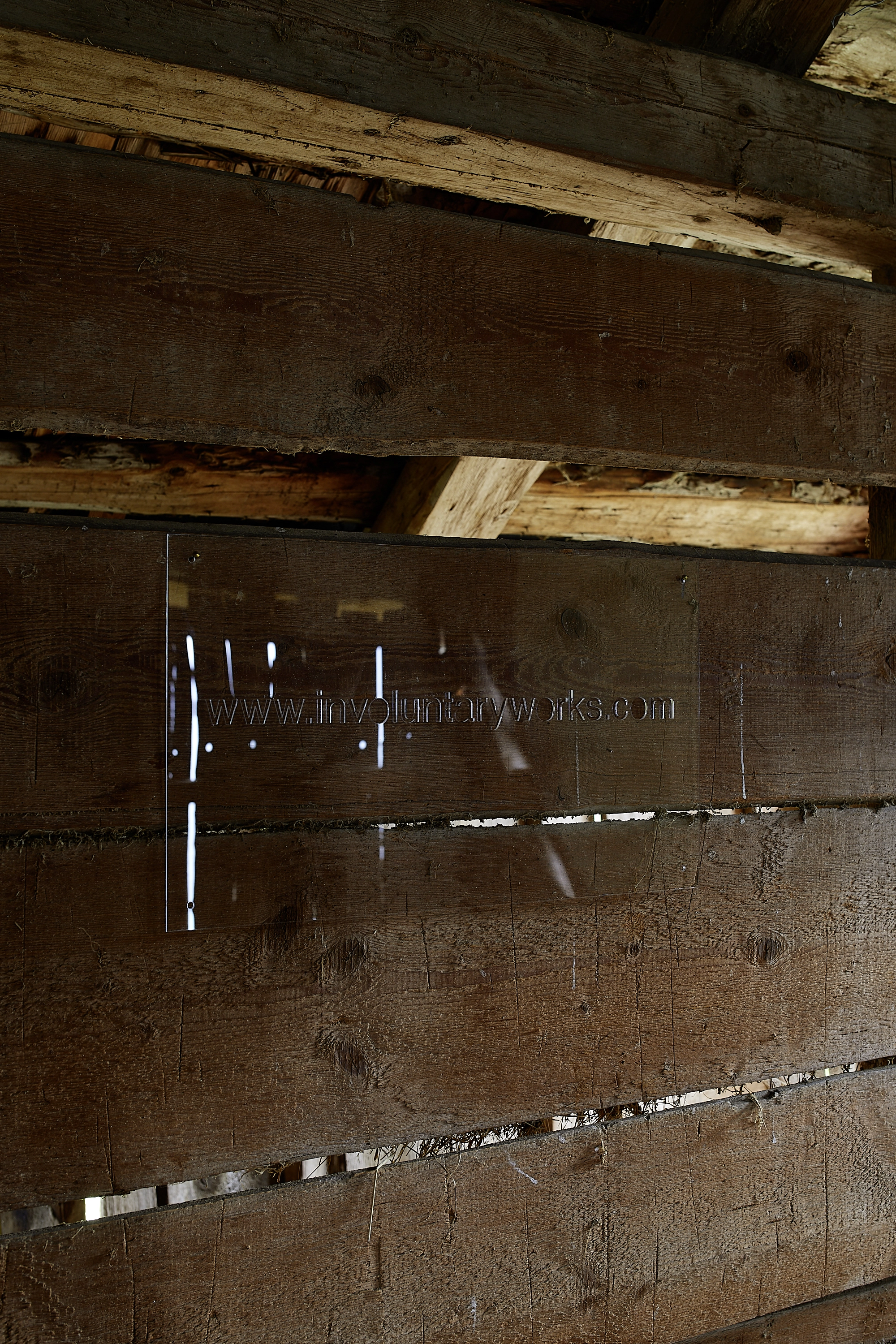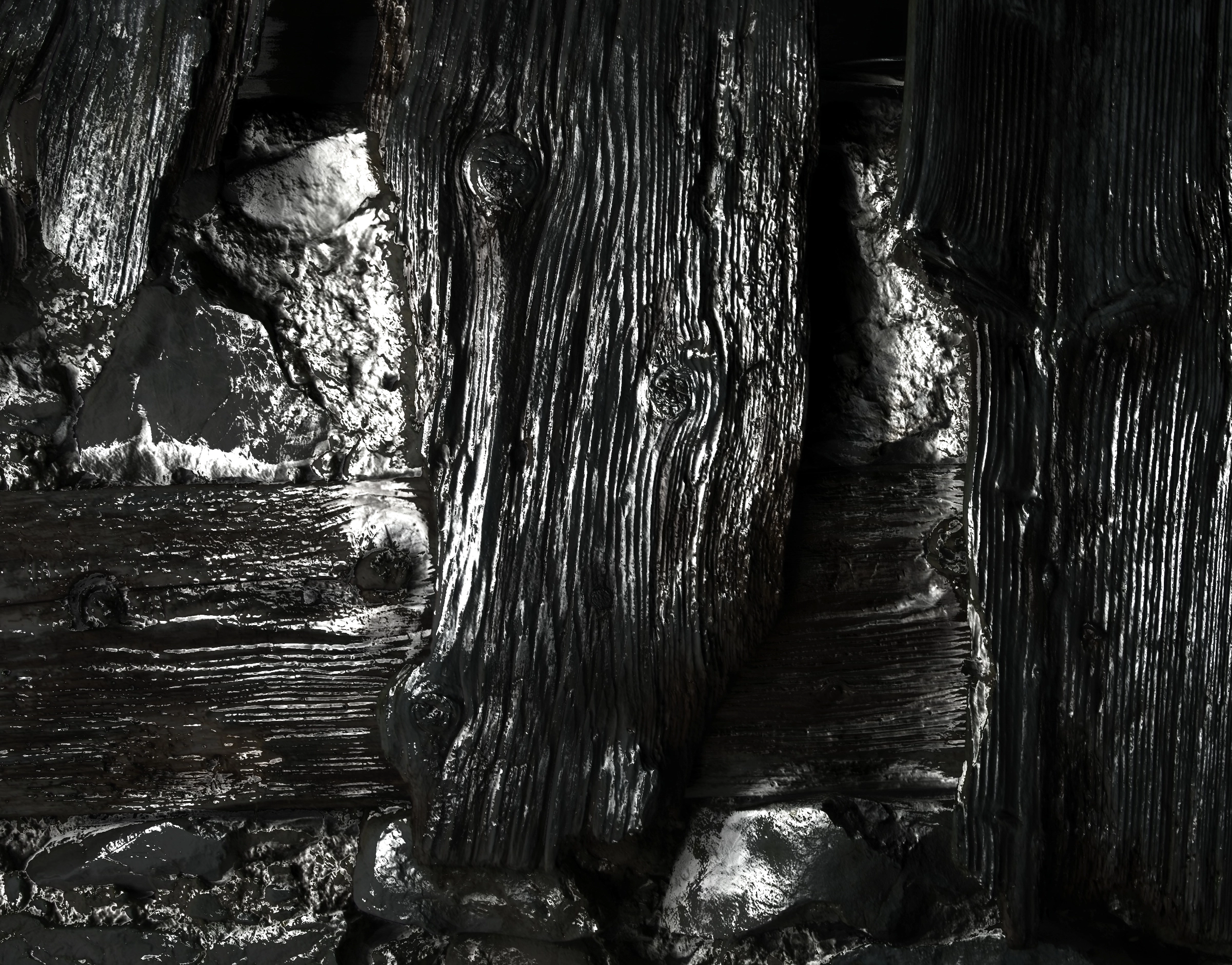British artist Elizabeth Wright has written the text below about her digital sculpture Involuntary Work: Atelier Amden (2018). The work can be visited online by accessing the following link: www.involuntaryworks.com.
Involuntary Work: Atelier Amden
"Previously I made series of digital photographic surface captures of the former barn known as the Atelier Amden. This involved using an ‘open-source’ technique called Reflectance Transformation Imaging (RTI); this process is ordinarily used by archaeologists to reveal the surface information of an artefact that the naked eye is unable to see. A continuous 360 degree recording of the building’s exterior façade was made; working systematically, at a fixed level, many separate captures were taken. Having modelled a continuous unbroken loop, one small section that described the space between two wooden planks stood out, as being representative of the whole archival process.
In keeping with the photographer Andre Brassaï‘s photographic recordings: whereby everyday mundane objects such as bus tickets and bread rolls, photographed in extreme close up are monumentalized, thereby becoming, through the process of recording, ‘Involuntary Works’. In some of these early photographs that were nominated as ‘Involuntary Works’ the found object became anthropomorphised through the act of cropping, (the object became segmented). This process of segmentation could equally be understood in my nomination of the image of the two planks of wood as distinguished from the rest of the Atelier façade. Through this anthropomorphic lens the two segmented planks might appear as containing human facial traits, possibly a face, eyes and nose. Picturing the space or gap between the planks identifies the break or fissure that prevents the recording from producing a continuous Mobius Strip that was originally the intention of the capture.
This break, as identified and elevated within this section of the recording re-presents the former barn in its anthropomorphic form as both finger and sculptural print. Whilst the process of RTI reveals the marks and traces that the naked eye is unable to recognise or acknowledge; these troughs and fallows have been involuntarily authored, etched by the physical circumstances that the barn is exposed to and located within. In accordance with this durational print and following the logic of the extrusions that have already accrued a subsequent series of expulsions are further digitally rendered, whereby the print, liberated from the barns façade, proposes a secondary sculptural form.
Through this digital rendering process of the façade of the building Atelier Amden is able to be experienced as a sculptural form at a distanced removed; the journey is a digital one with a screen as mediator of the archival capture. The legacy that is prime texture is dispersed through digital means conveying the sense of place through fractured visual data."
– Elizabeth Wright

 Images
Images
 Info
Info







 2009, EOS 100 (Amden)
2009, EOS 100 (Amden)